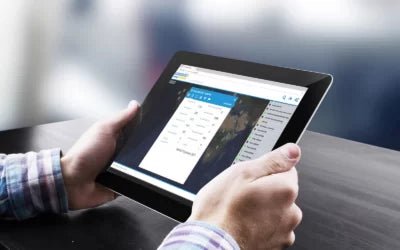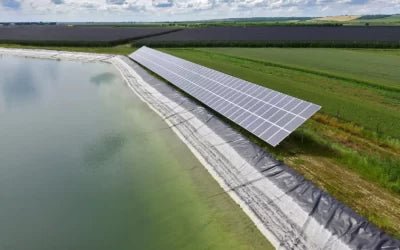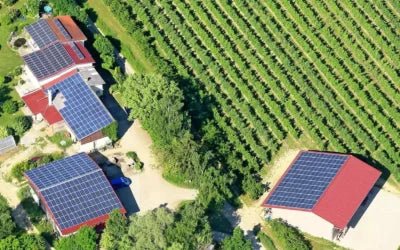Solar pumps are an essential technology in many rural and off-grid areas, providing access to water for irrigation, livestock and household use.
With the increasing availability of remote management and remote monitoring technologies, solar pump systems can now be managed and monitored remotely, allowing for more efficient and effective operation.
Remote management refers to the ability to control and adjust the pump system remotely, while remote monitoring involves passively collecting data on the system’s performance and status. In this context, comparing the features and benefits of these two technologies can help stakeholders decide which approach is most appropriate for their specific needs.
This article will explore the features and benefits of a connected water pumping system which includes remote management and remote monitoring as well as providing guidance on how to choose the right solution for your requirements.
Living in a Connected World
We live in a connected world where devices and objects are constantly communicating with each other over the internet, thanks to the Internet of Things (IoT). The IoT is a vast network of interconnected devices and sensors that gather and share data, enabling us to control and monitor various systems and processes remotely.
The rise of the IoT has led to a world where our homes, workplaces, and even cities are becoming smarter and more efficient. For example, smart homes use IoT-enabled devices such as thermostats, lighting, and security systems that can be controlled remotely via a smartphone app. This allows homeowners to adjust their home’s temperature, turn off lights, or check on security cameras from anywhere in the world.
Similarly, businesses like LORENTZ use IoT sensors and smart, mobile devices to monitor and control various processes such as water usage and equipment performance. We call this system “CONNECTED” and the physical components that are the core to this system includes:
LORENTZ PS Commander
A solar powered cellular gateway that connects the pump controller to the cloud-based platform (LORENTZ Global) to help troubleshoot and configure devices for optimal performance.
LORENTZ PumpScanner & Assistant
An Android app that can be used to configure and troubleshoot your LORENTZ PS Commander and PSk3 range product via Bluetooth.
LORENTZ Global
Allows you to monitor and manage LORENTZ devices anywhere in the world for a small monthly cost. The platform is a modern, easy to use web-based interface which provides access to real time data and configuration settings to get the most out of your system.
With a system like “CONNECTED”, customers can easily analyse data from sensors to make configuration simple, while optimising their operations and improving efficiency. All you need is any internet connected computer, tablet or smartphone to start experiencing the benefits right away!
The importance of sensors
LORENTZ solar water pumps use a range of sensors which are vital for monitoring and controlling their operation. These sensors are typically integrated into the pump controller, which is the brain of the system and responsible for managing the pump’s operation.
Some of the sensors commonly used in LORENTZ water pumps include:
Flow Sensors
These sensors measure the volume of water being pumped and provide data on the flow rate and total water pumped.
Pressure Sensors
These sensors measure the water pressure in the pump and provide data on the system’s pressure level, which can be used to optimise the pump’s performance.
Temperature Sensors
These sensors monitor the temperature of the pump and the water, providing data on the system’s thermal performance and detecting any issues such as overheating.
Solar Irradiation Sensors
These sensors measure the intensity of the sun’s radiation, which is used to optimise the pump’s performance based on the available solar energy.
Level Sensors
These sensors are used in systems such as water tanks or reservoirs to monitor the water level and provide information on when to start or stop the pump.
Voltage and Current Sensors
These sensors measure the electrical voltage and current being drawn by the pump, providing data on the system’s power consumption and detecting any issues with the motor or electrical components.
By using these sensors in combination with advanced pump controllers that enable remote monitoring AND remote management, LORENTZ water pumps can achieve greater efficiency, reduce maintenance costs, and prevent system failures or downtime. The data provided by these sensors can be used to optimise pump performance, detect potential issues early on, and make informed decisions on system operation and maintenance.
Remote Monitoring VS Remote Management
The main difference between remote monitoring and remote management of water pumps is the level of control and intervention that is possible from a remote location.
Remote Monitoring typically involves the use of sensors and other monitoring equipment to collect data on the performance of a water pump or system, which is then transmitted to a central monitoring system for analysis. The data collected can be used to identify potential issues or inefficiencies in the pump’s operation, but typically no direct control or intervention is possible from the remote location.
Remote Management, on the other hand, involves the use of technology to remotely monitor AND control the operation of water pumps from a remote location. This may involve the use of sensors and monitoring equipment to collect data, but also includes the ability to remotely adjust the pump’s settings, such as flow rate or pressure, in response to changing conditions or to optimise its performance. In some cases, remote management may also include the ability to remotely diagnose and repair issues with the pump, without the need for a physical visit to the site.
The benefits of remote monitoring and remote management- Save countless hours from not having to conduct any physical inspections at the pump’s location. Instead you can manage remotely from anywhere in the world via LORENTZ Global.
- Configurable alerts that flag any issues as soon as they come up
- Complete control of your water by setting the time and quantity of water to be pumped from any web device
- Easier to diagnose and troubleshoot issues with access to all performance data, and referring more complex problems remotely to expert advisors for support
- Planned maintenance based on monitoring pump performance data over time
Working with a LORENTZ dealer to get the best performance
For a smaller system like LORENTZ “S”, it’s easy enough to self-install without the help of an expert. For larger solar pump systems, it’s highly recommended to use an expert for the installation and maintenance. Solar water pumps are complex systems that require specific knowledge and skills to install and maintain properly. Improper installation or maintenance can lead to poor system performance, increased maintenance costs, or even complete system failure.
A accredited LORENTZ dealer can provide you with the necessary expertise and support to ensure that your solar water pump system operates at peak performance and efficiency. They can help you select the right pump and system components for your specific application, design and install the system, and provide ongoing maintenance and support to keep it running smoothly, including LORENTZ’s range of remote management solutions.







